With an edge of defiance and a wink of humor, Bruce Frost grows cherries where cactus and oranges have better odds.
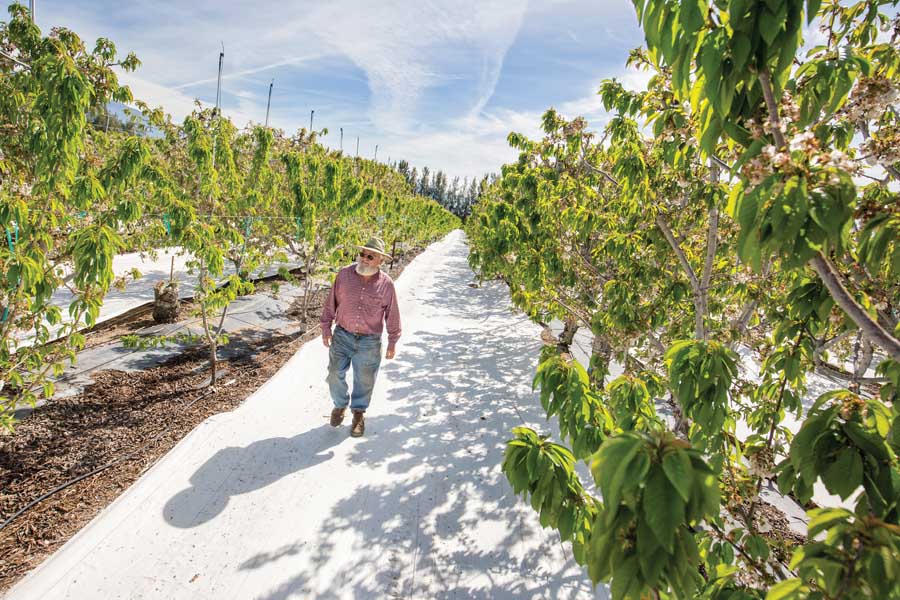
Bruce Frost walks between new and older cherry plantings on his ranch, Acorn Farms, near Bakersfield, California on March 9, 2016. His ranch is so warm in winter, Frost uses micro sprinklers above the canopy to chill the orchard. (TJ Mullinax/Good Fruit Grower)
In the face of years of drought, salty ground water and poor winter chill, the Bakersfield, California, orchardist believes he can get his trees to hit the high-priced early market before Northwest growers swoop in and dominate the rest of the summer.
“I’m a typical farmer,” said Frost, owner of Acorn Farms, an orchard at the base of the arid Tehachapi Mountains so warm he cools with overhead sprinklers in the winter. “I think I can do better than any farmer, and I’m willing to go broke trying to prove it.”
A promising bloom and healthy water supply had California cherry growers optimistic about 2016. Growers’ early prediction of an 8.1 million-box crop was revised to 7.5 million boxes, then lowered further to below 5 million boxes after heavy rains in early May.
The past two years, orchardists, especially those south of Fresno, have struggled.
Overall, 2014 was the worst recent year for sweet cherries, when growers shipped only 2.7 million 18-pound boxes; 2015 was better with 5.9 million boxes, but still well short of the nine-year average of 7.2 million boxes.
“The last two years were freaks of nature,” said Mike Collins, chairman of California Cherry Board’s estimate committee.
One of the largest cherry companies in the world, Stemilt Growers, sold one of its cherry orchards last year in Arvin, a diverse agricultural district on the southeast reaches of Bakersfield.

Bruce Frost is one of several California growers looking for new cherry varieties that better handle the high summer heat and low winter chill and also ripen earlier. This test variety, 51-011 on Gisela 12, is an experimental variety from a California breeder planted on Frost’s Acorn Farms ranch near Bakersfield on March 9, 2016. (Map by Jared Johnson, photo by TJ Mullinax/Good Fruit Grower)
Stemilt, based in Wenatchee, Washington, owns a packing facility in Stockton that works with growers throughout California.
Kyle Mathison, father of the current Stemilt president, owns an orchard in Shafter, just west of Bakersfield. He plans to sell that, too, said Erick Stonebarger, the general manager of the company’s California operations.
Yield problems due to chill were part of the reason, but so were drought, land values and other economic factors. “It’s not an all or nothing proposition by any means,” he said.
However, nobody’s panicking. Some growers are planting more cherries in new areas, hoping newer varieties less reliant on winter chill will continue to give them an early season edge.
New varieties
One of the fastest growing varieties is Coral Champagne, an early ripener that grows well in all parts of the state. Growers predict 1.9 million boxes of that variety, up more than one-third from last year’s record of 1.3 million boxes.
A broad category of other niche varieties, most of them newer trademarked strains from private California breeders, such as Sequoia, Glen and Royal varieties, could reach 600,000 boxes, well above last year’s count.
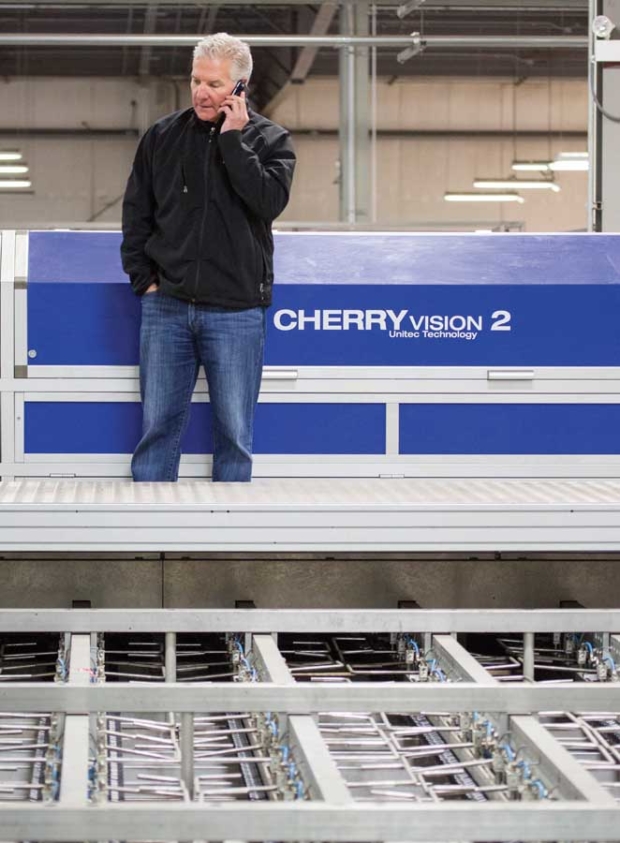
Busy with expanding O-G Packing’s cherry line in Stockton on March 11, 2016, Tom Gotelli says packers need to be ready for growth. He believes new varieties and technological improvements in sorting and packing facilities will keep California cherries one step ahead of Washington crops to market. (TJ Mullinax/Good Fruit Grower)
Plenty of companies are investing in expansion. O-G Packing of Stockton, one of the state’s largest cherry shippers, installed a 32-lane packing line in 2013 and a 40-lane line the next year in spite of California’s growing struggles, said Tom Gotelli, one of the family owners. The company lost “a couple hundred” acres over the past two years but replanted right back to cherries.
“We’re having to replant a lot of cherries in Bakersfield because we have what we call dirty water, which is bad water,” said Gotelli, a fourth-generation grower, referring to ground water with a high saline and boron content, a problem more pronounced in the Bakersfield area as growers turned more to wells in recent years that lower the water table as reservoirs run dry. Cherries are more susceptible to that than nuts or citrus.
O-G Packing also owns an orchard in Washington near Tieton.
In Kingsburg, just south of Fresno, KingFresh Produce installed a new cherry line worth nearly $2 million in 2015, the year after one of the cherry industry’s worst seasons.
“You know, it’s the old theory, if everybody is moving to the left, it’s always smart to move to the right,” said Keith Wilson, company president.
Wilson figured KingFresh could capitalize on geography and new Southern California acreage coming into production in Kern and Tulare counties, some of the earliest ripening areas.
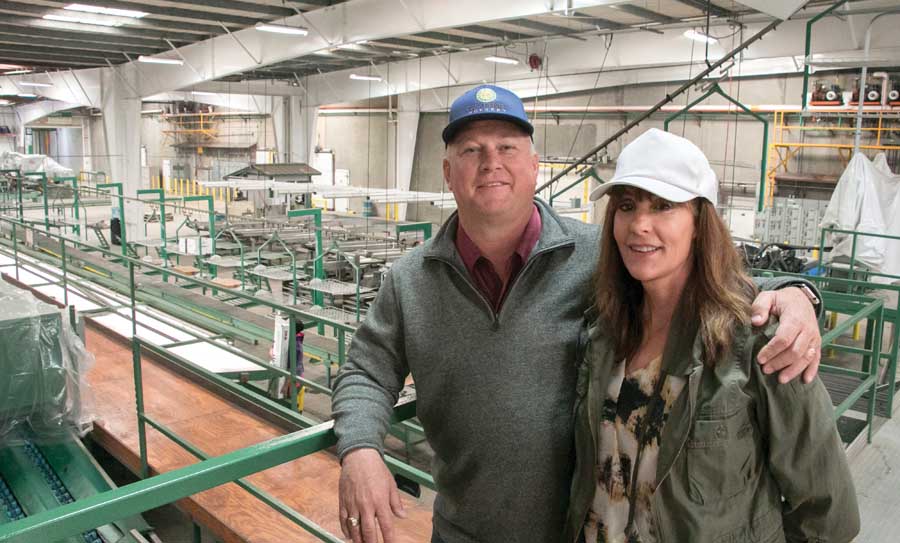
Keith and Lisa Wilson of KingFresh Produce installed a cherry packing facility on May 9, 2016 near Kingsburg to capitalize on cherry expansion in southern counties. (Ross Courtney/Good Fruit Grower)
KingFresh is one of just a few packers near Fresno, midway between Bakersfield and Stockton. Wilson suspects he can get cherries to market more quickly with improved packouts.
In California’s cherry market, growers rely on the seasonal excitement of fresh fruit. Prices start at their peak and go down as cooler, more abundant growers from Washington and Oregon fill the market.
“The name of the game is to pick early and get the hell out of the way because everybody up north is coming on top of us,” Frost said.
For example, on May 5 last year, 16-pound boxes of 10-row Brooks cherries fetched between $65-$75 f.o.b. prices, according to U.S. Department of Agriculture Market News Reports. That range dropped by $20 the next week.
Not so easy anymore
Once upon a time, cherries were considered a relatively easy tree fruit to grow in California. They required few sprays, about three weeks of intense labor for only two varieties — Burlat, an early ripening variety, and Bings, “the main show,” said Greg Costa, a Lodi grower and member of the California Cherry Board.
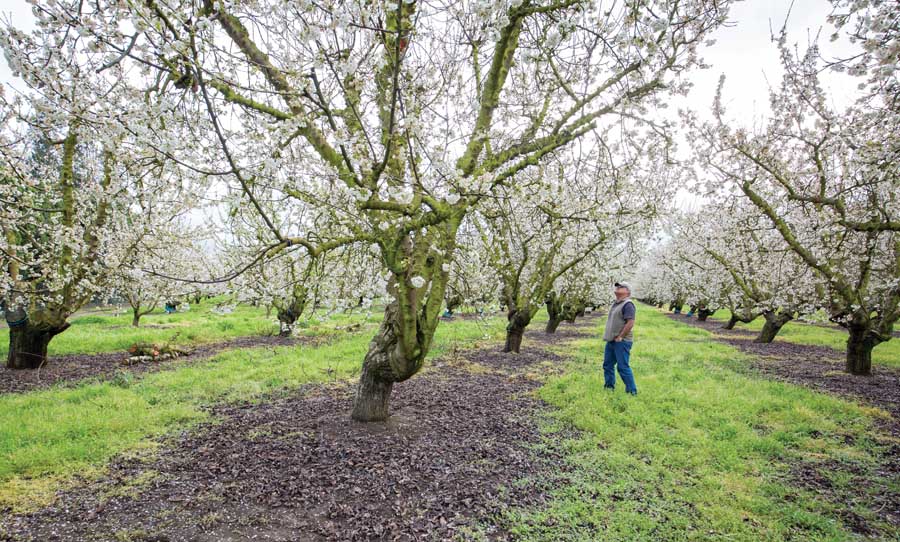
California Cherry Board member Greg Costa checks how one of his older Bing orchards near Lodi handled several days of rain on March 7, 2016. Costa is confident California growers can be stronger than ever with investment in agricultural science. (TJ Mullinax/Good Fruit Grower)
The industry centered in the Santa Clara Valley south of San Francisco, a place with moderate temperatures and conducive soils with which no other cherry growing region in the nation wanted to compete.
Eventually though, urbanization and high land prices in the area now known as Silicon Valley pushed the cherry farming families — mostly descendants of Italian immigrants — into the Stockton and Lodi areas of the Central Valley of California, where about 70 percent of the state’s cherries are grown today.
In the 1960s, the onset of cherry buckskin disease ushered in the days of year-round maintenance and at one point took the California acreage way down. “That eliminated cherries from certain parts of California,” Costa said.
The early 1990s brought about chemical bloom manipulators that helped growers overcome low chill, and opened the doors to planting more acreage in the hotter south, such as Bakersfield, some 240 miles away.
Acreage has surged in the past 10 years due to rising demand in Asian markets and Canada. Bearing acreage climbed from 26,000 to 33,000 from 2007-2014, according to the U.S. Department of Agriculture. Some growers estimate overall acreage is well above 40,000 acres now.
In contrast, Washington had 35,000 bearing acres in 2014 and an estimated 40,000 acres in 2015, but produced three times the volume of California in 2015.
These days, California’s well-documented droughts affect all growers, but they face other challenges specific to cherries — heat stress, salty ground water and low chill.
Cherries, more than even apples or pears, require a certain amount of winter chill to thrive the following summer. Central California has not been getting that. Some blame climate change, others the decline of fog.
California’s Central Valley is famous for tule fog, a winter phenomenon named after a local grass and best known for causing traffic accidents. However, that fog also insulates fruit trees from sunshine, moderating temperatures so the trees can acquire enough chill units. Most locals and meteorologists claim the fog is on the wane.
To compensate, Frost turns on overhead micro sprinklers or stretches shade netting across his canopies if the temperature climbs above 55 degrees from November 1 to late January, a time of year Washington growers would be more worried about cold hardiness.
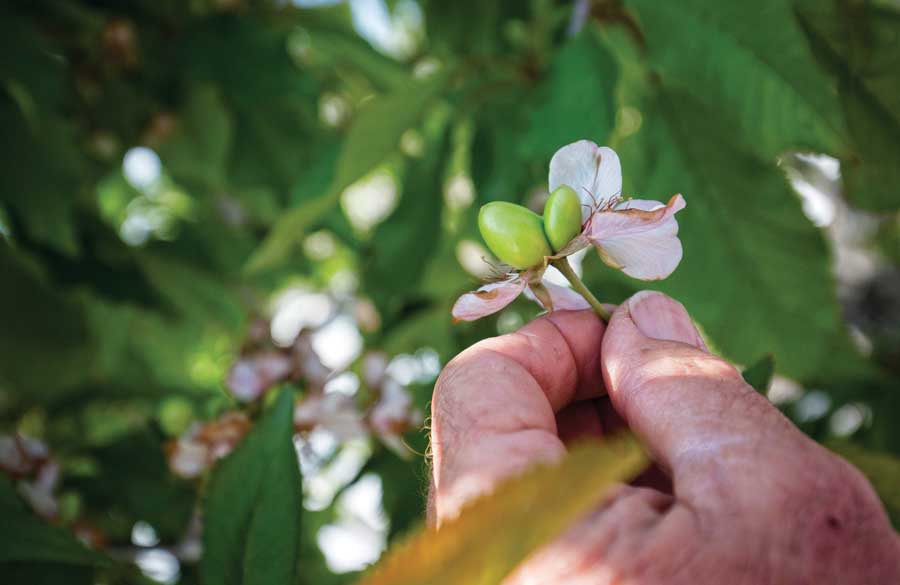
Bruce Frost shows one of several cherry doubles on his ranch, Acorn Farms, near Bakersfield, California on March 9, 2016. (TJ Mullinax/Good Fruit Grower)
Private breeders, meanwhile, have been experimenting with new low-chill varieties that tolerate warm winters. Growers commonly plant test plots to see which ones work, letting the once ubiquitous Bing shrink as a percentage of the crop.
The industry still is looking for the “silver bullet,” a variety that will ripen early, stay firm and resist cracking, said Gotelli of O-G Packing.
Gotelli forecasts a good future for the cherry industry due to the variety research and continued improvements to packing lines. He even forecasts a bump in the labor pool as the growing blueberry industry automates, freeing up workers for cherries.
However, he does not expect the cherry industry to expand much. “I don’t think it’s going to keep expanding for a little while here for California, not at the pace that it was.”
Coral, Brooks and Tulare are the most common varieties in the southern part of the state, with Coral working the best so far, said Frost, who has been removing his Tulare trees and plans to take out some Brooks soon.
Heat stress during and after harvest also takes its toll, causing a higher percentage of doubles and spurs. Bakersfield averages a high temperature of 97 degrees in July, compared to 88 in Yakima, Washington.
In short, cherries are a tough crop in California.
“It was pretty arrogant of us to plant cherries down here in the desert,” he said. But Frost calls himself an optimist. “I think we can do it down here. We’ve got plenty of problems, but we’ve also got ideas how to solve them.” •
– by Ross Courtney
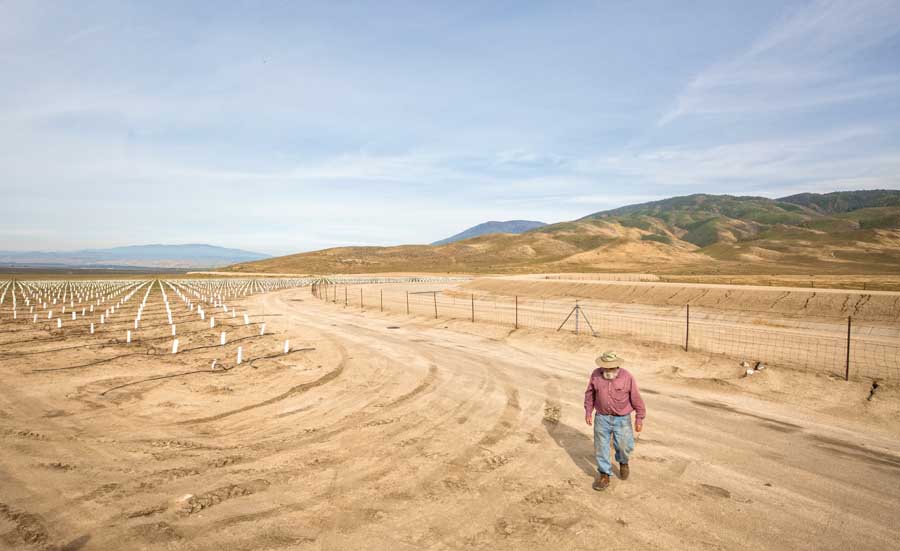
In the distance to the left sits one of the southernmost commercial cherry orchards in California, managed by Bruce Frost, southeast of Arvin. To the right is the Arvin-Edison Water Storage District South Canal, and beyond that are the Tehachapi Mountains and the Mojave Desert. (TJ Mullinax/Good Fruit Grower)
Editor’s note: This story was updated to reflect changes to California’s 2016 crop estimate following heavy rains in May.






Leave A Comment